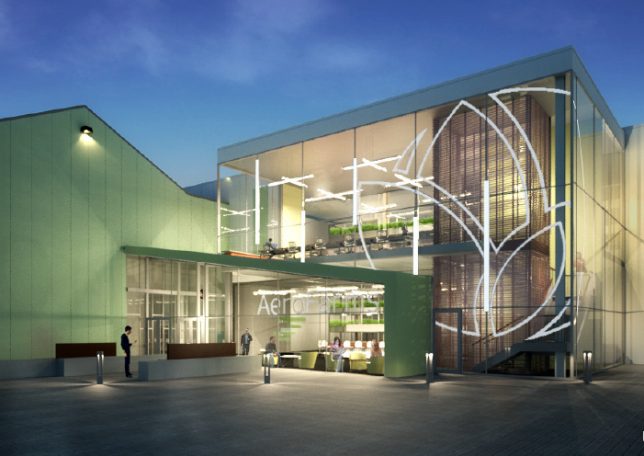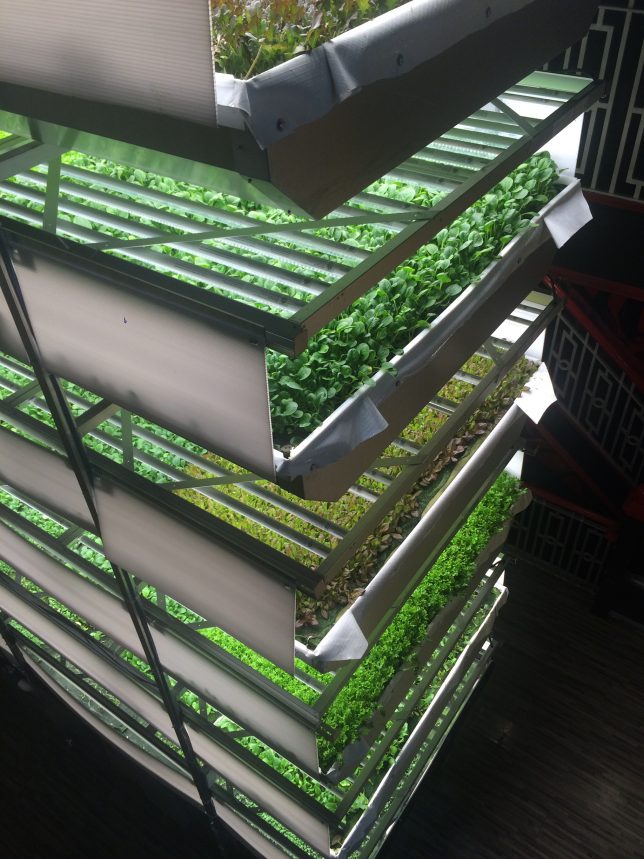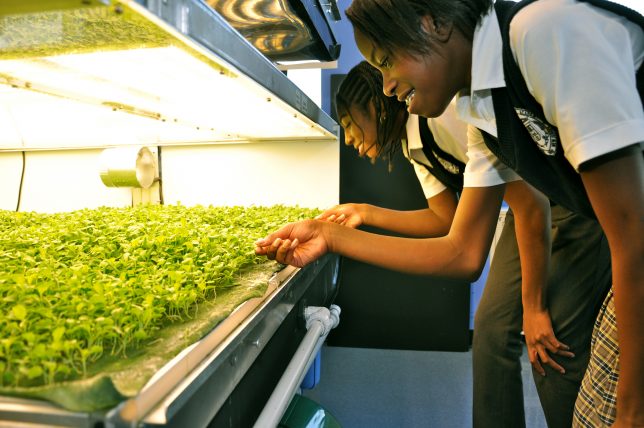 |
| Kazuto Yamaki, CEO of Sigma, pictured in his company’s plant in Aizu, Japan when we visited in 2015. |
The photo industry is recovering from the disruption in global supply chains caused by Chinese shutdown, but with the rest of the world still in crisis, companies are preparing for a major drop in customer demand, especially in the US and Europe. Last week I spoke to Kazuto Yamaki of Sigma to get his take on the ongoing situation worldwide, and on Sigma’s strategy for the next generation of cameras and lenses.
Please note that this interview was conducted remotely, and has been edited for clarity and flow.
Mr. Yamaki, I last spoke to you two weeks ago, which feels like a year ago. What has changed in those two weeks?
Two weeks ago I was mainly concerned about the production system, and the supply chain. We make all of our products in Japan and make most of the parts by ourselves or by Japanese local suppliers, but some parts such as electronics are supplied from China, therefore, I was concerned about the supply of parts. But in fact, up to now we haven’t had a serious problem with that. Some parts have been delayed due to confusion in the supply chain but it hasn’t been serious, and we’ve been able to adjust our production planning.
Production and delivery systems in China are starting to normalize
So on the production side, we haven’t had a serious problem. And we don’t expect to have problems in the future, because production and delivery systems in China are starting to normalize.
I was also really concerned about sales in China. At the beginning of March, my worst-case scenario was a halving of sales compared to last year. But in fact our business in China is quite stable, and not too bad, which is a big relief. Sales in China are still doing OK because there’s a very strong online business. Right now the biggest concern is the market situation in Europe and the USA. I had never imagined such a crisis in Europe and America.
How are things in Japan?
It’s not a crisis situation, like in some parts of the US or in Europe. People are walking in the streets, and coming back to stores. It’s not as bad as it is in other countries. But for the photo industry it’s really bad. Since the beginning of March, we’re seeing a decline in sales in the Japanese market, but we will have to wait for a while to get a picture of the full situation.
 |
| Sigma’s Aizu factory in northern Japan is still where all of the company’s lenses and cameras are assembled, with a primarily domestic (i.e., Japanese) supply chain. This makes Sigma unusual among modern manufacturers in the consumer digital imaging space. |
So to some extent, life is returning to normal in parts of China?
This is what I’ve heard. People are starting to return to the streets, and our staff in China are reporting a positive mood in the towns.
What effect do you think that this crisis will have in the long term?
To be honest I don’t know. Some countries have already decided to lock down cities for weeks, even months, and this will affect our business. I don’t want to be too negative, but the situation may not improve in the short term.
Do you have any idea of what portion of your sales in Europe and the US are online?
It’s a bit too early to say that, but in Europe, it doesn’t look like online business can compensate for the loss of sales from physical stores. Some online retailers are also prioritizing food and sanitary goods because of the high demand, so shipments of cameras and lenses are being de-prioritized.
 |
| Sigma’s ‘DC’ trio of native mirrorless lenses (now available for Canon EF-M, Sony E-mount and Micro Four Thirds) has proven a hit, with demand regularly outstripping supply in some markets. |
Has this crisis revealed any vulnerabilities in the current structure of the photography industry – for example within the supply chain?
Well, this is not the first time. We had similar problems when the earthquake hit Japan in 2011, and also a flood in Thailand. The global supply chain was thrown into total confusion. I think we’re aware of such risks. Sigma has a relatively short supply chain. As you know, most of our suppliers are located in Japan, and we work with them directly. However, some of those suppliers do outsource certain components to other suppliers, called ‘second-tier’ suppliers.
Most companies have a very complicated structure, with first-tier suppliers, second-tier suppliers, and sometimes even third-tier. But in the case of Sigma, our supply chain is quite simple, so it’s easy to control the situation.
Let’s move on from talking about coronavirus – you recently said that going forward, Sigma would prioritize development of native mirrorless lenses over lenses for DSLR. Can you explain that decision?
It’s simply because we’ve had higher demand for mirrorless lenses. The mirrorless camera market is stable compared to DSLR. If you look at the market statistics you’ll see that the decline in DSLR sales is quite significant. This decline gets steeper every month.
We’re also seeing a decline in sales of our DSLR lenses, so naturally we have to focus our efforts on the development of mirrorless lenses.
 |
| Demand for Sigma’s ‘DN’ (Digital Native) range of lenses for mirrorless mounts has outstripped demand for lenses made for traditional DSLR lens mounts. For this reason, Sigma is prioritizing development of native mirrorless lenses. |
How have the full-frame ‘DN’ lenses performed in the market since they’ve been released?
They’re doing very well, especially our 24-70mm F2.8. It’s been very well-received. We’re still catching up to demand for that lens. We’ve been enhancing our manufacturing capacity, continuously, but we still can’t meet demand. Even in the current difficult situation, demand for that lens is still very strong.
What portion of your DN sales are L-mount lenses?
It’s tough to say. Most of the lenses we’re shipping of course are for Sony E-mount. It’s too early, and we don’t have a big enough lineup to make our potential customers feel comfortable with the L-mount system. Changing systems is a big decision for the customer. There are a lot of potential customers out there, but I think they’re waiting and seeing how the L-mount system develops. I think we need one or two more years before we have a complete L-mount system. Not only from Sigma but also Panasonic and Leica.
Last year you released your first full-frame camera, the fp. How has it performed in the market?
It sold quite well at the beginning. Early adopters were very interested, and purchased the camera immediately. We’ve received a lot of emails from customers, which I’ve read, and we have a lot of customers who are very happy and satisfied with the fp. We’ve also been monitoring feedback online, through Facebook and Twitter; things like that.
To be honest though, sales have declined considerably [since launch], especially in Europe and America. It’s still selling well in Japan, but overall sales have been lower than expected.
 |
| The fp is an ultra-compact full-frame camera aimed at photographers and filmmakers. In order to minimize its size, Sigma designed the fp with a fully electronic shutter. Mr. Yamaki believes that this will act as a model for the ‘camera of the future’. |
Why do you think that is?
There are several reasons, I think. First of all, changing systems is a big investment for customers. So even though we have potential customers who are really interested in the camera, I think a lot of them are waiting to see how the L-mount system develops. We don’t have enough compact lenses, suited to the fp. We’re currently developing several lenses of that type. Once we have that kind of lineup, I think a lot of potential customers may decide to buy the camera.
Due to the coronavirus crisis, we had to cancel many events. So we’ve lost an opportunity to let customers try our camera
That’s one thing. The second thing is that in Japan, we’ve found that ‘touch and try’ events have worked really well in convincing customers that the fp is a good camera. After they try it, many of them buy it. We had a plan to conduct many such events, but due to the coronavirus crisis, we had to cancel many events in Japan, in China and in Europe. So we’ve lost an opportunity to let customers try our camera. That’s disappointing, but once things calm down we’ll start again.
So when a show like CP+ or NAB is canceled, what impact does that have on a manufacturer like Sigma?
It’s difficult to evaluate the value of such events, today. But if you take CP+, it’s basically a consumer show. Typically we see people there who are excited by new products, and we can use that excitement to create some momentum. So it’s definitely not a good thing to lose such opportunities.
 |
| A typical scene from CP+ 2019, showing the density of the crowd as enthusiasts flock to get their hands on the latest photo gear. This ‘hands-on’ experience is precious when it comes to converting customer interest into sales, and manufacturers are feeling the effect of so many canceled shows in 2020. |
Can you talk more about the development of smaller lenses?
Going forward, we will still try to deliver the highest-possible quality products. But we will have two main streams of products. One is for very serious photographers, like our existing ‘Art’ series. But another line will be high quality, premium lenses, but much more compact. And very stylish, like our 45mm F2.8, with metal housings, and high quality aperture and focus rings. We will expand that kind of range for street photographers, or those who need smaller, stylish, high-quality products.
So our readers can look forward to a range of smaller lenses from Sigma, with Art-series optical quality but more modest maximum apertures?
Yes, that’s our goal. You’ll probably see such products in the near future.
 |
| Sigma is committed to making more compact lenses, like the 45mm F2.8 ‘Contemporary’ for L and E-mount in future. |
Do you think that the fp range will evolve to include things like a mechanical shutter, and viewfinder?
If we made the fp with a mechanical shutter, it would not be so compact. One of the reasons it’s so small is that we eliminated the mechanical shutter. We created the fp as a kind of platform for a ‘future camera’. I think in future, most cameras won’t have a mechanical shutter, because of improvements to the readout speed of sensors. I haven’t made any decisions about future products, but we’ll probably keep that concept.
You recently announced the postponement of your planned Foveon sensor full-frame camera. Can you give us more details about why that project was postponed?
The development of the sensor has been significantly delayed. We are still working on it, but there are still several technical problems we need to overcome. If everything goes well, we should be able to release the camera next year. But if we continue to face technical problems the camera may be delayed further. We haven’t stopped developing the camera, but without the sensor we can’t move very fast.
Are you interested in creating a full-frame alternative to the DP Merrill fixed-lens camera concept?
We don’t have any plans to do that right now. We are researching the market, but it’s difficult to make such a camera really compact. Of course there are cameras like the Sony RX1R II, which is a very small camera, but it’s difficult to make the lens compact. If we wanted to make a really compact lens, our options for focal length and F stop become very limited. Compared to APS-C or M43 cameras with a fixed lens, it’s very challenging, technically.
Our mission is to support as many mounts as possible, but due to limited engineering resources, we have to be selective
Is there anything you can say to our readers about the possible development of Canon RF, Fujifilm XF and and Nikon Z-mount lenses from Sigma?
As a lens manufacturer, we believe that it is our mission to support as many mounts as possible, but due to limited engineering resources, we have to be selective. We are watching the market.
How have your ‘Classic’ cine lenses been received?
Very positively, especially for filmmakers looking for a unique rendering. These lenses create huge ghosting and flare, so they’re not easy to use. Especially if there is a direct light source in the frame. But if you carefully control the lighting, it can create a very nice, soft, ‘retro’ kind of look. High-end filmmakers in Hollywood have received these lenses very positively.
Do you know of any productions that are using these lenses?
It’s still very early, we only started shipping in January and February, so we don’t have that kind of information yet. But we made a film, ourselves, it’s about 30-40 minutes long. We shot the entire thing on the Sigma fp, and we used our regular cine lenses, and in some scenes the ‘Classic’ lenses were used. We need to apply to some film festivals, and after that will release the movie online. Probably in the near future.
Do you think that your DC DN lens lineup will grow? It’s been three lenses now for quite a long time.
Actually, demand for those lenses keeps growing. It’s really surprising. In terms of units, they’re the top seller for Sigma right now. It’s a surprise because in general the market for APS-C cameras and lenses is declining. But sales of those three DC DN lenses keep growing. Most of the sales are for Sony E-mount and Micro Four Thirds [versions], and in peak seasons sometimes we actually can’t keep up with demand.
Do you still see a healthy market for Micro Four Thirds?
Yes, I think Micro Four Thirds is well accepted by filmmakers, and our 16mm is really popular among M43 users. People who need a compact system still love Micro Four Thirds.
Editors’ note: Barnaby Britton
In the two weeks since I spoke to Mr. Yamaki last (for this article) a lot has changed. Only a few days ago, his biggest concern was getting hold of parts from China, and a significant slowdown in Chinese consumer spending. Now, with countries all over the world in virtual lockdown, and US and European governments bracing for a catastrophe in their healthcare systems in the coming days, such worries seem almost quaint.
It remains to seem how quickly – and to what extent – markets will recover, but there are some tentative signs of hope. Mr. Yamaki tells us that the situation in China is stabilizing, and the mood in the country is positive. Japan seems (for now, at least) to have escaped the worst social effects of the COVID19 outbreak, and South Korea has employed pioneering test and trace technologies to address what could have been a catastrophe.
Away from the immediate crisis, Mr. Yamaki tells us that demand remains strong for some of the company’s products, particularly the ‘DN’ range
The same sadly cannot be said of Europe or the US, and with consumers in those territories tightening their belts in the face of economic turmoil, it’s not hard to understand why Mr. Yamaki still characterizes the situation for the photo industry at this early point in the year as ‘really bad’.
There are tough times ahead, without a doubt, for all of us. But away from the immediate crisis, Mr. Yamaki tells us that demand remains strong for some of the company’s products, particularly the ‘DN’ range of native mirrorless lenses. These include the 24-70mm F2.8 DG DN Art, and the trio of ‘DC’ lenses for APS-C. This latter range, in fact, appears to be a genuine success story.
It seems that we’ll have to wait a little longer for Canon RF and Nikon Z support
Support for Canon EF-M has been added to the ‘DC’ range but in the full-frame arena, it seems that we’ll have to wait a little longer for Canon RF and Nikon Z support. As Mr. Yamaki says, he wants to support as many mounts as possible, but his engineers can’t do everything; they have to be selective.
It’s also likely that the communication protocols that make these new mounts work are protected I.P., and need to be licensed. It’s entirely possible therefore that just like their customers, Sigma’s engineers are waiting patiently too: in their case for the original manufacturers to open the protocols up to third parties, before any decisions can be made.
Coming soon though, we’re told, is a range of small, lightweight lenses specifically designed to be a better match for cameras like the fp. A range of more compact, slower maximum aperture lenses but with ‘Art’ series image quality is a longstanding request from Sigma fans, and it’s great to have confirmation from Mr. Yamaki that these are on their way ‘in the near future’ for L and – safe to assume – Sony E mount, too.
Coming soon… is a range of small, lightweight lenses specifically designed to be a better match for cameras like the fp
Meanwhile, Sigma continues to make inroads in the filmmaking community. Sales of the hybrid stills / video fp may be slowing, but Sigma’s range of Cine lenses have proven popular with filmmakers, and Mr. Yamaki tells us that the response from Hollywood to its range of ‘Classic’ cine lenses, designed with minimal coatings to give a retro look to footage, have been received well.
Articles: Digital Photography Review (dpreview.com)






















You must be logged in to post a comment.